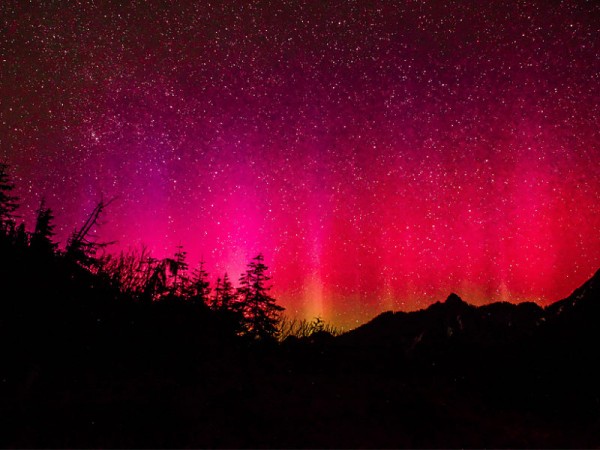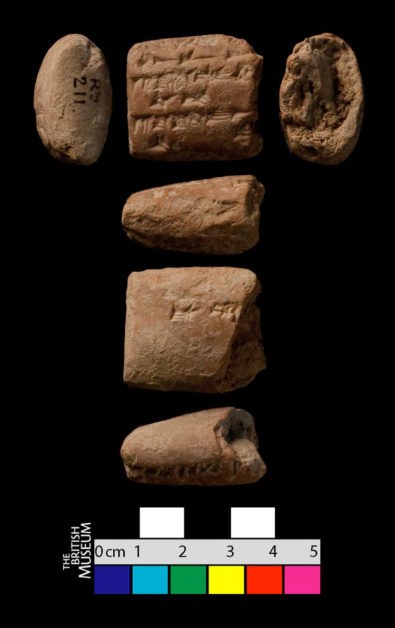
Credit: iStock/Danielle Griffin
Ishtartv.com
- eos.org
By Mara
Johnson-Groh, 31 December 2019
Records of aurorae in Mesopotamia
from 2,600 years ago are helping astronomers understand and predict solar
activity today.
On a dark spring night, the sky
blanketing the Neo-Assyrian Empire turned red. The “red glow” was taken as an
ominous sign—one important enough that the Assyrian court scribe Issār-šumu-ēreš
carved an official record of the event into a clay tablet.
Although the event, which we know
today as the aurora borealis or northern lights, wouldn’t have affected the
course of nature at the time, it is now helping astronomers understand our Sun
and may even help protect astronauts and assets in space.
The Assyrian record is thought to
be one of the earliest known observations of aurorae, dating to around 660 BCE.
Aurorae are created by high-energy particles launched from the Sun, and
historical records offer a way to study conditions on the Sun long before the
invention of telescopes.
“Direct observations [of the Sun]
span some 400 years with sunspot observations, and ground-based instrument
observations are mostly within 200 years,” said Hisashi
Hayakawa, lead author of a new study and an astronomer at Osaka University
in Japan and the Rutherford Appleton Laboratory in the United Kingdom. “To
discuss the kind of less frequent, but more hazardous events [coming from the
Sun], we need to expand the data coverage, like with historical documents.”
Blasts in the Past
Hayakawa and his colleagues
identified the records by examining ancient cuneiform tablets held in the
British Museum. These tablets were carved by Assyrian court scribes, whose job
it was to document important happenings in the empire. They often included
accounts of celestial appearances, like comets (ṣallummû), meteors (kakkabu
rabû), and lunar and solar halos (tarbāṣu), which were thought to be omens of
the future. Although most Assyrian and Neo-Assyrian tablets aren’t explicitly
dated, their authorship gives scholars a close idea of when the tablet was
written—usually within a decade.
In the tablets studied,
researchers found two references from Nineveh (a city near current-day Mosul,
Iraq) and one from Babylon (built along Iraq’s Euphrates River) that describe
red aurorae, using terms like akukūtu, meaning “red glow,” or stating “red
covers the sky.” Using the authorship of the tablets, researchers think the
events happened sometime between 680 BCE and 650 BCE, a century earlier than
previous records of aurorae.
Documenting aurorae helps astronomers understand patterns of solar
activity. Magnetic storms on the Sun can release giant plumes and jets of
materials, some of which fall back into the Sun and some of which get ejected
and spewed across the solar system. Particles that make it to Earth can be
funneled along magnetic field lines into Earth’s upper atmosphere, where they
strike atmospheric particles, causing them to glow. Red aurorae, like the ones
seen in ancient Assyria, are typically caused by low-energy electrons.
Since they follow magnetic field
lines, aurorae are most commonly seen near the poles. But strong solar events can make aurorae visible at
lower latitudes. Although today it is rare to see an aurora in the Middle East,
2,000 years ago the magnetic North Pole was much closer to Mesopotamia,
hovering over the Norwegian archipelago of Svalbard instead of its current
location just 4° south of the geographic North Pole.
The newly identified records also
match indirect evidence of solar activity. Since 2012, several studies have
found isotope data of carbon-14 levels recorded in tree rings that suggest a
strong burst of solar activity during the same time period. By adding Assyrian
observational evidence to these natural archival data, scientists are better
able to confirm that the event was truly a space weather event
caused by an extreme solar storm.
“Comparing these data from
natural archives to real historical records made by contemporary astrologers at
the time is very important,” said Ilya Usoskin, a space physicist at the University of Oulu
in Finland who was not involved with the new research. “From it, we know that
we are on the right track, because the two records match each other.”
Dangerous Beauty
Although solar energetic
particles can create beautiful aurorae, they can also fry electronics in telecommunications
satellites and harm astronauts in space. The distance the ancient Assyrian
aurorae were seen from the pole is similar to an event in 1989 when the power
grid in all of Quebec was knocked out.
“It is likely that the [ancient]
storms were considerably large,” Hayakawa said. “Storms with similar intensity
[today] would be harmful to modern technological infrastructures.”
Understanding the historical frequency of solar storms and learning how
to predict such big events are important for mitigating their effects on our
tech-based society. The historical data can help astronomers model how often
such extreme events occur and better assess the probability of similar extreme
events happening again.
“Direct observations from the
last decades are not very useful here because they just cover too short period
of time,” Usoskin said. “Such historical records are very helpful because now
we know that during the last, say, 3,000 years there were three events of that
magnitude, which means that, on average, we may expect such disasters to occur
a few times per millennia.”
Hayakawa and his colleagues
recently presented their analysis of the Assyrian tablets in a paper in Astrophysical Journal Letters.

This Neo-Assyrian tablet from the Library of Ashurbanipal provided researchers with what may be one of the earliest descriptions of the aurora borealis. The Trustees of the British Museum, CC BY-NC-SA 4.0
|